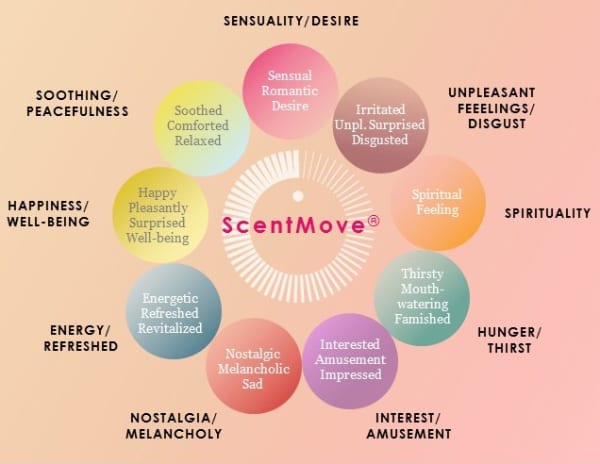Scientific research by Firmenich has determined that consumer context is the key to establishing emotional benefits with fragrance. After years of research-validated by peer-reviewed publications, Firmenich has proven that its three-tiered approach, based on odour-emotion scales, consumer verbalization and implicit testing, delivers unique scents with stronger emotional benefits for consumers.
“To drive emotion through scent, one solution does not fit all. For example, the smell of durian fruit recalls energy and wellbeing in China, but triggers dislike in the US,” said Ilaria Resta, President, Global Perfumery. “By applying our proprietary scientific and consumer research, we can help customers create a stronger emotional impact, with contextualized solutions that reflect country and category preferences.”
“Seventy per cent of consumers’ daily decisions are based on emotions,” explained Dr Christelle Porcherot, Corporate R&D Principal Scientist. “Scents trigger strong emotions; however, the link between a scent and an emotion depends on the individual’s experiences in life and the context in which a person smells the scent.”
Through neuroscience, Firmenich researchers are able to understand the transformation of molecular signals into odour and memories. ScentMove® is Firmenich’s proprietary emotion evaluation model and showcases nine emotional dimensions across 25 commonly used terms, far beyond simply pleasant feelings. Using fMRI scans of individuals’ brain activity while smelling different perfumes, ScentMove® reveals patterns that correspond to different emotional profiles. However, to develop relevant solutions, Firmenich also takes into account the effects of learning and memory. Cultural background, life experiences and encountered smells shape emotions, as our brain adapts to changing environments.
“The emotional response can partly be tracked by physiological measurements and brain recordings such as fMRI scans; but ultimately, only verbalization about the experienced feelings provide a true understanding of the quality of the emotions elicited by fragrance,” said Dr Christian Margot, Distinguished Scientist and Director, Corporate Research & Development. “This enables us to establish a link between emotion and context.”









